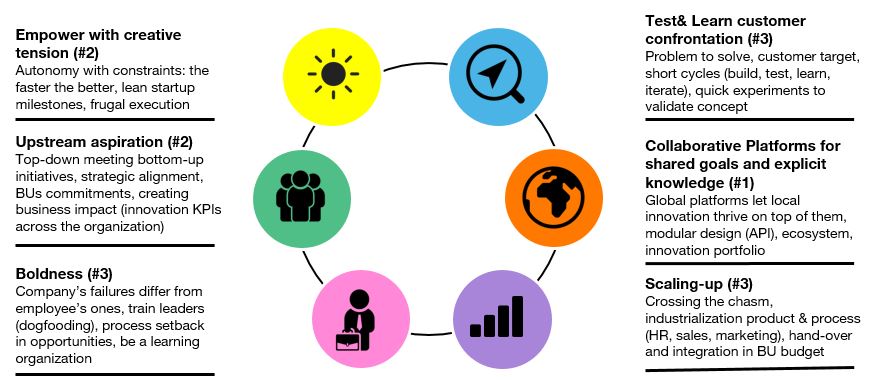
GUEST POST from Art Inteligencia
Design Thinking has rapidly become a cornerstone of modern business strategy, promising to foster innovation and solve complex problems through a human-centered approach. But how can businesses measure the real impact of Design Thinking on their success? In this article, we will explore key metrics and provide two compelling case studies to illustrate how companies have achieved measurable success through Design Thinking.
Key Metrics for Measuring Impact
To assess the impact of Design Thinking, organizations should consider a combination of quantitative and qualitative metrics. Here are some critical metrics to consider:
- Customer Satisfaction: Feedback scores and net promoter scores (NPS) before and after Design Thinking initiatives.
- Time to Market: Reduction in the time it takes to develop and launch new products.
- Revenue Growth: Increase in sales and market share attributable to new product innovations.
- Employee Engagement: Improvement in employee satisfaction and retention rates.
- Innovation Pipeline: The number and quality of new ideas entering the development phase.
Case Study 1: IBM
IBM, a global technology leader, adopted Design Thinking to accelerate innovation and enhance customer experiences. By integrating Design Thinking into their processes, IBM achieved significant results.
- Customer-Centric Solutions: IBM focused on understanding the problems and needs of their users, leading to more intuitive and effective software solutions.
- Shortened Development Cycles: The use of iterative prototyping and user testing reduced the time required to bring new products to market by 50%.
- Increased Revenue: IBM saw a significant rise in revenue from new products designed using Design Thinking principles, contributing to a 20% increase in quarterly earnings.
IBM’s success demonstrates how adopting a human-centered approach can yield substantial benefits, both in terms of customer satisfaction and financial performance.
Case Study 2: Airbnb
Airbnb leveraged Design Thinking to transform their platform and enhance the user experience. This pivot was critical at a time when Airbnb faced stagnation and increased competition.
- Empathy Mapping: Airbnb conducted extensive user research, including empathy mapping, to understand the pain points of both hosts and guests.
- Prototype Development: They developed and tested numerous prototypes rapidly, iterating based on user feedback.
- User-Centric Interface: The redesign of the platform led to a more user-friendly interface, resulting in improved engagement and booking rates.
- Business Growth: Airbnb’s revenue surged as a result of the enhanced user experience, helping them achieve a valuation of over $100 billion.
The transformation of Airbnb highlights the power of Design Thinking in driving substantial growth and user engagement for digital platforms.
Conclusion
Design Thinking is more than just a buzzword; it’s a powerful methodology that can drive business success across various metrics. By focusing on human-centered design, organizations like IBM and Airbnb have not only improved their products and services but also achieved remarkable financial performance and market positioning.
To measure the impact of Design Thinking effectively, businesses should consider a blend of customer satisfaction, time to market, revenue growth, employee engagement, and the robustness of their innovation pipeline. As these case studies show, the power of Design Thinking lies in its comprehensive approach to problem-solving and its ability to transform challenges into opportunities for growth and success.
Bottom line: Futurology is not fortune telling. Futurists use a scientific approach to create their deliverables, but a methodology and tools like those in FutureHacking™ can empower anyone to engage in futurology themselves.
Image credit: Pexels
![]() Sign up here to get Human-Centered Change & Innovation Weekly delivered to your inbox every week.
Sign up here to get Human-Centered Change & Innovation Weekly delivered to your inbox every week.










